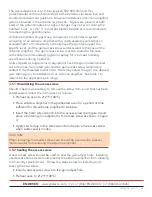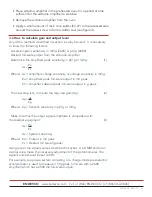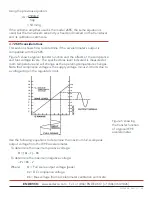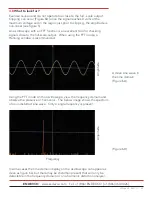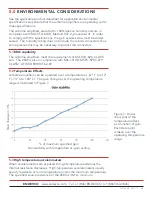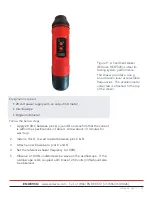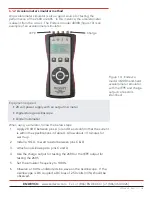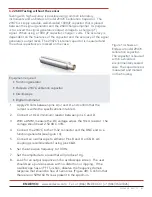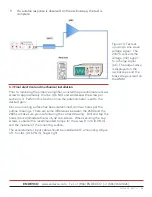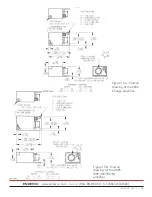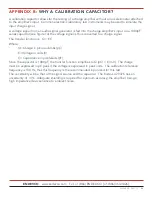
ENDEVCO
www.endevco.com Tel: +1 (866) ENDEVCO [+1 (866) 363-3826]
IM 2680/5 083119
24
07
MAINTENANCE AND CALIBRATION
The airborne amplifiers are sealed and potted thus there are no user
serviceable parts. Cleaning the connectors is important to maintain noise-
free operation. Annual calibration using sources traceable to the National
Institute of Standards and Technology (USA) or other recognized standards
organizations is recommended.
Below is a list of checks to perform prior to returning the unit or contacting
an applications engineer:
•
Check the connector wiring making sure that pin A is at the proper
polarity. Look for possible shorted pin connections.
•
Check for damaged cables on the input and output.
•
Using a DMM, measure the DC bias between pins C&D. This should
read approximately 4.65 volts DC.
•
Measure input current from the power supply. See table 5 for the
current values.
7.1
Returning the unit
Prior to returning the unit to the factory, contact the applications
engineering department. Let the applications engineer know the results
of any of the above tests. If it is necessary to return the unit to the factory,
follow the below procedure:
USA: Contact the customer service department, at the factory, and
obtain an RMA number. Include the RMA number on the enclosed
documentation and the outside of the shipping box. Include a description
of the problem encountered and the unit serial number and your contact
information.
Outside USA: Contact your local representative or distributor and follow
their instructions.

